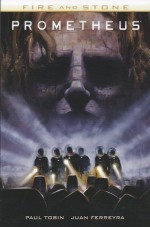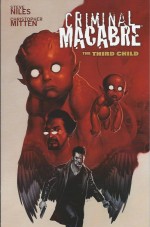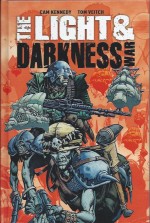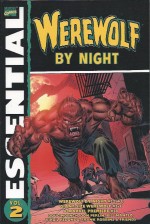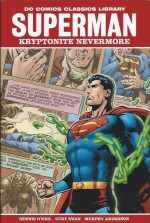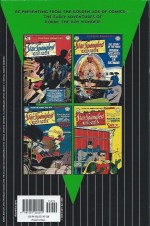
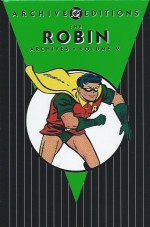
By Bob Kane, Bill Finger, Win Mortimer, Jim Mooney & various (DC Comics)
ISBN: 978-1-4012-2625-1
Created by Bob Kane, Bill Finger & Jerry Robinson, Robin the Boy Wonder debuted in Detective Comics #38 (April 1940), which introduced a juvenile circus acrobat whose parents were murdered by a mob boss.
The story of how Batman took the orphaned Dick Grayson under his scalloped wing and trained him to fight crime has been told, retold and revised many times over the decades and still regularly undergoes tweaking to this day.
In the original comics continuity Grayson fought beside his mentor until 1970 when, as an indicator of those turbulent times, he flew the nest, becoming a Teen Wonder, college student and eventually leader of a team of fellow sidekicks and young justice seekers – the Teen Titans.
He graduated to his own solo spot in the back of Detective Comics from the end of the 1960s, alternating with Batgirl, and held a similar spot throughout the 1970s in Batman. The college-based wonder won a starring feature in the anthology comic Batman Family and a run of Giant Detective Comics Dollar Comics before becoming a star all over again in the 1980s as leader of the New Teen Titans, first in his original costumed identity and eventually in the reinvented guise of Nightwing. He even re-established a turbulent working relationship with his dark, driven and dangerous former senior partner.
Robin’s creation as a junior hero for younger readers to identify with inspired an incomprehensible number of costumed kid crusaders and Grayson continues in similar innovative vein for the older, more worldly-wise readership of America’s increasingly rebellious contemporary youth culture… but his star potential was first realised much earlier in his eternally young career…
From 1947 to 1952, (issues #65-130) Robin, the Boy Wonder had a solo series – and cover spot – in Star Spangled Comics at a time when the Golden Age superhero boom was fading, its gaudy bravos gradually being replaced by more traditional heroes in genres such as crime, westerns and boys’ adventure stories.
The exploits herein contained blended in-continuity action capers with more youth-oriented fare, frequently reducing adults Batman, Alfred and Commissioner Gordon to minor roles or rendering them entirely absent, allowing the kid crusader to display not just his physical accomplishments but also his brains, ingenuity and guts.
This second sturdy deluxe hardback Archive Edition re-presents more tales from Star Spangled #86-105 (covering November 1948 to June 1950) recapturing the dash, verve and universal appeal of one of fantasy literature’s greatest youth icons – albeit with a greater role for Batman – and opens with a fascinating Foreword by Bill Schelly who adds a layer of historical perspective and canny insight to the capers to come.
Every beautiful cover is included – although most of the later ones feature colonial-era frontier sensation Tomahawk – and are lovingly rendered by Jim Mooney, Win Mortimer, Charles Paris, Bob Kane and Fred Ray.
Although unverified, writers Bill Finger, Don Cameron, David Vern Reed and Jack Schiff are considered by most comics historians to be the authors of the stories in this volume and I’m going to happily concur here with that assessment until informed otherwise. Easier to ascertain is Mooney as penciller of almost all and inker of the majority, with other pencil and penmen credited as relevant…
The action-packed relatively carefree high jinks commence with Star Spangled Comics #86 and ‘The Barton Brothers!’ (inked by Win Mortimer, who remained until #90) as the Boy Wonder took up the lone vengeance trail to hunt down a trio of killers whose crime spree culminated in gunning down the mighty Batman, after which racketeer Benny Broot discovered he was related to the aristocracy and patterned all his subsequent vicious predations on medieval themes as ‘The Sinister Baron!’…
Robin went AWOL in defiance of his mentor to clear the father of a schoolmate in ‘The Man Batman Refused to Help!’ but his good intentions in clearing the obviously framed felon almost upset a cunning plan to catch the real culprit, after which SSC #89 saw ingenious hoods get hold of ‘The Batman’s Utility Belt!’ and start selling customised knock-offs until the Dynamic Duo crushed the racket.
The murder of a geologist sent the partners in peril out west in #90 to solve ‘The Mystery of Rancho Fear!’, going undercover as itinerant cowboys to deal with a gang of extremely contemporary claim-jumpers whilst, with Mooney now handling all the art-chores, issue #91 found the Boy Wonder instigating a perplexing puzzle to stump his senior partner in ‘A Birthday for Batman!’
It would have all been the perfect gift if not for the genuine gangsters who stumbled upon the anniversary antics…
The crimebusting kid played only a minor role in #92’s ‘Movie Hero No. 1’ wherein Batman surreptitiously replaced and eventually redeemed an action film actor who was a secret coward, but resumed star status in ‘The Riddle of the Sphinx!’ when a mute, masked mastermind seemingly murdered the Dark Knight and supplanted Gotham’s criminal top dog Red Mask.
Entertainment motifs abounded in those days and Star Spangled Comics #94 heralded ‘The End of Batman’ when the Dynamic Duo stumbled on a film company crating movie masterpieces tailored to the unique tastes and needs of America’s underworld after which greed and terror gripped the streets when a crook employed an ancient artefact to apparently transform objects – and even the Boy Wonder – to coldly glittering gold in #95’s ‘The Man with the Midas Touch!’
An indication of changing times and tastes came with the September 1949 Star Spangled as Fred Ray’s Tomahawk took over the cover-spot from #96 onwards whilst inside, Robin’s solo tale ‘The Boy Who Could Invent Miracles!’ was pencilled by Sheldon Moldoff with Mooney inking.
The story saw the kid crusader working alone whilst Batman recovered from gunshot wounds, encountering a well-meaning bright spark whose brilliantly conceived conceptions revolutionised the world – but almost exposed the masked avenger’s secret identity…
First seen in Star Spangled Comics #70, The Clock was an anonymous criminal time-and-motion expert who became the closest thing to an Archenemy Robin had. ‘The Man Who Stole Time!’ returned yet again in #97 (with Mooney back on full art), determined to publicly humiliate and crush his juvenile nemesis through a series of suitably-themed crimes… but with the same degree of success as always…
In #98 a classmate of Dick Grayson’s briefly became ‘Robin’s Rival!’ after devising a method of travelling on phone lines as Wireboy. Sadly his ingenuity was far in excess of his fighting ability or common sense and he was wisely convinced to retire, after which gambling gangster Sam Ferris broke jail and turned his obsession with turning circles into a campaign of ‘Crime on Wheels!’ until Robin set him straight again…
SSC #100 offered a powerfully moving tale as the Boy Wonder gave shelter to ‘The Killer-Dog of Gotham City!’ and proved that valiant Duke could shake off his criminal master’s training to become a boon to society.
In #101 High School elections were being elaborately suborned by ‘The Campaign Crooks!’ with a bizarre scheme to make an illicit buck from students, whilst in #102 ‘The Boy with Criminal Ears!’ developed super-hearing: making his life hell and ultimately bringing him to the attention of sadistic thugs with an eye to the main chance…
Star Spangled Comics #103 saw the introduction of ‘Roberta the Girl Wonder!’ as class polymath Mary Wills decided to follow her heart and try to catch the ideal boyfriend by becoming his crime-fighting rival, whilst #104’s ‘Born to Skate’ revealed how classmate Tommy Wells‘ freewheeling passion led Robin to a gang using a roller-skate factory to mask crimes as varied as smuggling, kidnapping and murder…
The wholesome all-ages action ends with a rewarding tale blending model-making and malfeasance as a guilt-wracked Robin comes to the aid of a police pilot who had been crippled – and worse – whilst assisting on a case.
As part of his rehabilitation the Junior Manhunter devises high-tech models for Bill Cooper‘s aviation club but when ‘The Disappearing Batplanes!’ are purloined by cunning air pirates the scene is set for a terrifying aerial showdown…
Beautifully illustrated, wittily scripted and captivatingly addictive, these rousingly traditional superhero escapades are a perfect antidote to teen-angst and the strident, overblown, self-absorbed whining of contemporary comicbook kids.
Fast-paced, infinitely inventive and ferociously fun, here are superb yarns no young-at-heart Fights ‘n’ Tights fan will want to miss…
© 1948, 1949, 1950, 2010 DC Comics. All Rights Reserved.


